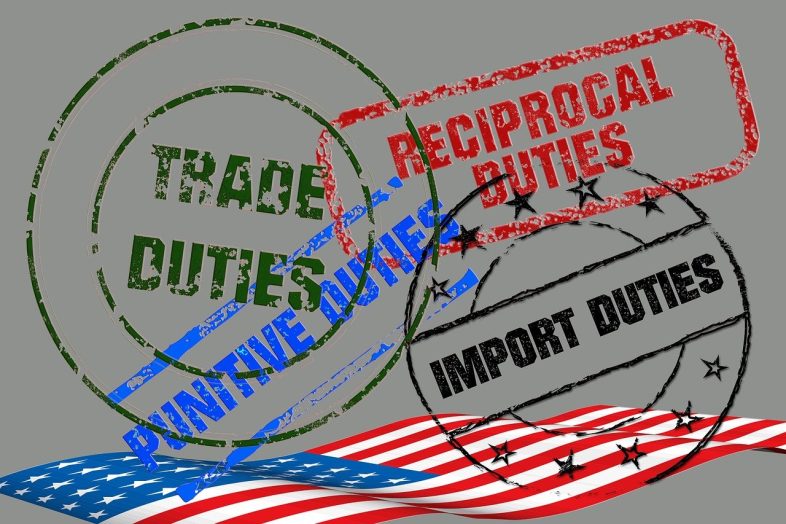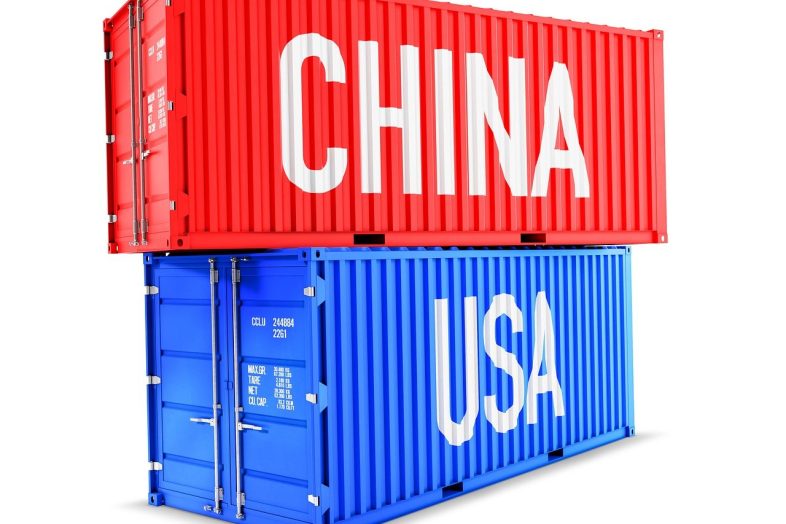Table of Contents
- Introduction: The Evolving Trade Landscape
- 1: Understanding the Current US-China Tariff Situation
- 2: How Tariff Tensions Disrupt Global Supply Chains
- 3: Business Impact Assessment and Risk Mitigation
- 4: Insurance Solutions for Tariff-Related Disruptions
- 5: Strategic Planning in an Uncertain Trade Environment
- 6: Future Outlook and Preparedness Recommendations
- Conclusion: Building Resilience in a Volatile Trade Landscape
Introduction: The Evolving Trade Landscape
The economic relationship between the United States and China—the world’s two largest economies—has become increasingly complex and contentious. Recent escalations in tariff tensions have created ripple effects across global supply chains, leaving businesses scrambling to adapt while navigating uncertain market conditions.
Key Questions Addressed in This Article:
- How are current US-China tariff tensions affecting businesses’ operational costs?
- What specific insurance products can protect against tariff-related disruptions?
- How can companies maintain supply chain continuity during trade disputes?
- What strategies help businesses remain competitive despite increased tariff costs?
Statistical Snapshot:
- 78% of multinational corporations report supply chain disruptions due to tariff changes
- $3.4 trillion in global trade potentially affected by current and proposed tariff measures
- 42% increase in trade-related insurance policy purchases since 2023
- 31% of businesses have relocated manufacturing to avoid tariff impacts
As trade barriers rise and political rhetoric intensifies, businesses require robust risk management strategies—with insurance playing a central role in financial protection. This comprehensive guide explores the current landscape, examines impacts across industries, and offers actionable insurance solutions to safeguard your business interests in this volatile environment.

1: Understanding the Current US-China Tariff Situation
The Historical Context and Recent Developments
The US-China trade relationship has evolved dramatically over the past decade, moving from cautious cooperation to outright competition. Recent developments have seen tariffs reimposed on billions of dollars of goods, creating significant market uncertainty.
What triggered the recent escalation in US-China tariff tensions?
The current tensions represent a continuation of trade policies initiated in 2018, but with new dimensions related to:
- National security concerns
- Technology transfer disputes
- Market access limitations
- Intellectual property protection
- Manufacturing reshoring initiatives
Statistical Insight:
- Section 301 tariffs affect approximately $370 billion of Chinese imports
- Chinese retaliatory tariffs impact roughly $110 billion of US exports
- Average tariff rates have increased from 3.1% to 19.3% on affected goods
- 67% of surveyed businesses report passing some tariff costs to consumers
Key Industries in the Crosshairs
The tariff impacts are not distributed evenly across sectors. Industries with complex global supply chains or high dependence on Chinese manufacturing have experienced disproportionate disruption.
Most Affected Sectors:
- Electronics and semiconductor manufacturing
- Automotive production and parts
- Industrial machinery and equipment
- Consumer goods and retail
- Agricultural products and food processing
Insurance Implications:
- Increased demand for trade disruption coverage
- Higher premiums for supply chain insurance in affected sectors
- New insurance products specifically addressing tariff-related risks
- Growing market for parametric insurance tied to trade policy changes
2: How Tariff Tensions Disrupt Global Supply Chains
Mapping the Disruption Pathways
Tariffs don’t simply add costs—they fundamentally alter the economics and logistics of global supply chains, creating cascading effects that reach far beyond the directly targeted goods.
How exactly do tariffs disrupt established supply chains?
- Direct cost increases – Immediate price hikes for imported components
- Supplier viability concerns – Financial strain on key vendors
- Inventory management challenges – Buffer stock requirements amid uncertainty
- Transportation complications – Rerouting and documentation burdens
- Compliance complexity – Navigating changing regulatory requirements
Statistical Evidence of Disruption:
- 43% of manufacturers report supplier reliability issues due to tariff pressures
- 29% increase in inventory carrying costs as businesses stockpile ahead of tariff implementations
- 52% of affected businesses have initiated some form of supply chain restructuring
- $182 billion estimated annual cost of supply chain adjustments due to trade tensions
Case Study: Electronics Industry Supply Chain Fragmentation
The electronics sector provides a clear illustration of tariff disruption dynamics. With components often crossing borders multiple times during assembly, tariffs compound at each stage.
Impact Analysis:
- Component sourcing diversification
- Assembly location reconsideration
- Increased inventory carrying costs
- Contract renegotiations with suppliers
- Insurance premium increases for supply chain coverage
Key Insurance Question: How can electronics manufacturers insure against multi-stage tariff exposure across complex global supply networks?
Insurance Solution Highlight: Comprehensive supply chain insurance with specific tariff risk riders that cover incremental costs at each production stage, offering financial protection against the compounding effect of multiple tariff applications.

3: Business Impact Assessment and Risk Mitigation
Quantifying the Business Impact
Understanding the full scope of tariff effects requires a comprehensive assessment approach that examines both direct and indirect impacts on business operations.
What methodologies help businesses accurately assess tariff exposure?
- Supply chain mapping and vulnerability analysis
- Scenario planning with variable tariff assumptions
- Total landed cost recalculations
- Supplier risk assessment
- Market share and revenue projection adjustments
Statistical Frameworks:
- 83% of businesses underestimate indirect tariff costs by at least 30%
- 4.2x multiplier represents average total impact vs. direct tariff costs
- 27% higher compliance costs reported by companies navigating changing tariff rules
- 39% of affected businesses have implemented formal tariff risk assessment programs
Risk Mitigation Strategies Beyond Insurance
While insurance forms a critical component of risk management, businesses are deploying multiple parallel strategies to mitigate tariff-related disruptions.
Diversification Approaches:
- Geographic supplier diversification (“China+1” strategies)
- Product redesign to use non-tariffed components
- Manufacturing footprint reconfiguration
- Distribution network adjustments
- Legal strategies including tariff engineering
Key Insurance Consideration: How should insurance coverage evolve as businesses implement these mitigation strategies?
Insurance Strategy Focus: Modular policy structures that can adapt to changing supply chain configurations while maintaining consistent coverage levels. Specific riders addressing costs during transition periods between supply chain models can provide critical protection during vulnerability windows.
<a id=”chapter-4″></a>
4: Insurance Solutions for Tariff-Related Disruptions
The Evolving Insurance Landscape
The insurance industry has responded to tariff tensions with innovative products designed specifically to address emerging trade risks.
What insurance products best address tariff-related disruptions?
- Trade Disruption Insurance (TDI) – Covers financial losses from supply interruptions
- Political Risk Insurance – Protects against government actions affecting trade
- Cargo and Transit Insurance – Addresses increased shipping complexities
- Business Interruption Coverage – Compensates for operational disruptions
- Supply Chain Parametric Insurance – Provides predefined payouts based on specific tariff triggers
Statistical Insurance Trends:
- 47% increase in trade disruption insurance policy purchases
- 23% average premium increase for supply chain coverage in high-risk sectors
- $4.2 billion new insurance capacity dedicated to trade-related risks
- 72% of risk managers now include tariff scenarios in insurance planning
Spotlight: Parametric Insurance Innovation
Parametric insurance solutions tied to specific tariff thresholds represent one of the most innovative approaches to managing trade policy uncertainty.
How Parametric Solutions Work:
- Predefined payout based on objective tariff rate triggers
- Rapid disbursement without lengthy claims processes
- Customizable coverage thresholds
- Transparent pricing models
- Complementary to traditional indemnity policies
Insurance Implementation Example: A manufacturing business secures parametric coverage that triggers a $2 million payout if tariffs on specific component categories exceed 25%. This provides immediate liquidity without requiring documentation of specific losses, allowing for quick supplier relationship preservation and alternative sourcing.

5: Strategic Planning in an Uncertain Trade Environment
Scenario Planning for Multiple Tariff Futures
Forward-looking businesses are implementing structured scenario planning methodologies to prepare for various potential developments in the tariff landscape.
What scenarios should businesses prepare for?
- Escalation Scenario – Increased rates and broader tariff application
- Stabilization Scenario – Continuation of current measures without expansion
- Negotiated Resolution – Gradual reduction through bilateral agreements
- Regional Realignment – Shift toward regional trade blocs and agreements
- Global Framework Revision – WTO reform and multilateral solutions
Statistical Decision Support:
- 68% of businesses with formal scenario planning reported better preparedness
- 42% lower financial impact experienced by companies with flexible supply chains
- 3.7x ROI on scenario planning investments reported across surveyed companies
- 51% of businesses are developing dual or triple sourcing options for critical components
Insurance Strategy Integration
Insurance planning must be integrated with broader strategic initiatives to create a cohesive risk management approach.
Key Strategic Questions:
- How should insurance coverage evolve with changing supply chain configurations?
- What coverage gaps emerge as business models adapt to tariff pressures?
- How can insurance complement other risk mitigation strategies?
- What role does insurance play in enabling more aggressive business strategies?
Insurance Strategy Table: Aligning Coverage with Business Objectives
| Business Objective | Insurance Approach | Key Considerations |
| Supply diversification | Geographic coverage expansion | Ensure new regions have adequate insurance infrastructure |
| Just-in-case inventory | Stock throughput policies | Coverage for increased inventory carrying values |
| Supplier relationship preservation | Trade credit insurance | Protection against supplier financial instability |
| Manufacturing relocation | Project delay coverage | Protection during transition periods |
| Market share protection | Business interruption insurance | Coverage for revenue impacts during adjustments |
6: Future Outlook and Preparedness Recommendations
The Path Forward: Trade Policy Trajectories
While the future remains uncertain, several potential pathways for US-China trade relations have emerged, each with distinct implications for businesses and insurance needs.
What factors will shape future US-China trade relations?
- Geopolitical competition dynamics
- Domestic political considerations in both countries
- Supply chain resilience imperatives
- Technology competition and national security concerns
- Global economic growth patterns
Statistical Indicators to Monitor:
- Trade deficit figures – Often cited as policy justification
- Manufacturing reshoring metrics – Indicating policy effectiveness
- Consumer price indices – Reflecting tariff pass-through effects
- Business investment patterns – Signaling confidence levels
- Insurance premium trend lines – Market assessment of risk levels
Comprehensive Preparedness Framework
Businesses require a structured approach to navigate ongoing uncertainty while maintaining competitive positions.
Five-Point Preparedness Strategy:
- Risk Assessment Protocols
- Regular supply chain vulnerability mapping
- Quantitative impact modeling
- Supplier risk profiling
- Financial Protection Mechanisms
- Comprehensive insurance coverage
- Financial hedging strategies
- Contract renegotiation frameworks
- Operational Flexibility Enhancements
- Alternative supplier development
- Production process adaptability
- Distribution network redundancy
- Regulatory Navigation Capabilities
- Trade compliance expertise
- Tariff classification specialization
- Documentation excellence
- Strategic Communication Frameworks
- Customer transparency protocols
- Supplier relationship management
- Investor communication strategies
Insurance Implementation Focus: Insurance solutions should be evaluated against this comprehensive framework, with coverage designed to reinforce each strategic element rather than functioning as a standalone protection mechanism.
Conclusion: Building Resilience in a Volatile Trade Landscape
The US-China tariff tensions represent more than a temporary disruption—they signal a fundamental shift in the global trade environment. Businesses that approach this challenge strategically, with insurance as a core component of their risk management strategy, will emerge better positioned to thrive amid ongoing uncertainty.
Key Takeaways Table: Actionable Insights for Business Leaders
| Area | Challenge | Solution | Insurance Component |
| Supply Chain | Disruption vulnerability | Diversification and redundancy | Supply chain and trade disruption coverage |
| Financial Planning | Cost uncertainty | Scenario-based forecasting | Parametric and trigger-based policies |
| Supplier Relationships | Stability concerns | Collaborative risk sharing | Trade credit and supplier failure protection |
| Inventory Management | Holding cost increases | Optimized buffer approaches | Stock throughput and carrying cost coverage |
| Strategic Positioning | Competitive uncertainty | Adaptable business models | Business interruption with market share provisions |
Final Statistical Perspective:
- 82% of businesses expect tariff tensions to continue for at least 24 months
- 63% have integrated insurance into their broader risk management strategy
- 3.2x better outcomes reported by businesses with comprehensive protection mechanisms
- 41% of executives cite insurance as a critical enabler of strategic flexibility
The path forward requires vigilance, adaptability, and strategic foresight. By combining robust insurance protection with operational flexibility and continuous scenario planning, businesses can transform trade uncertainty from a threat into a potential competitive advantage.










Add Comment